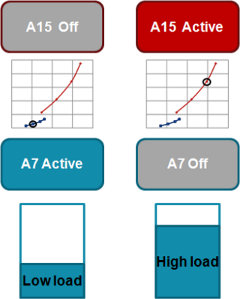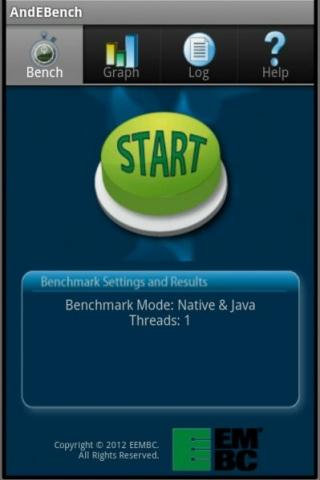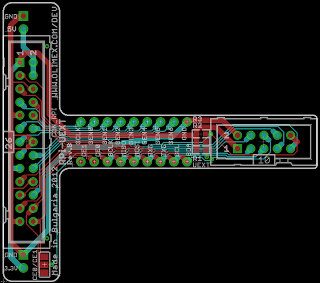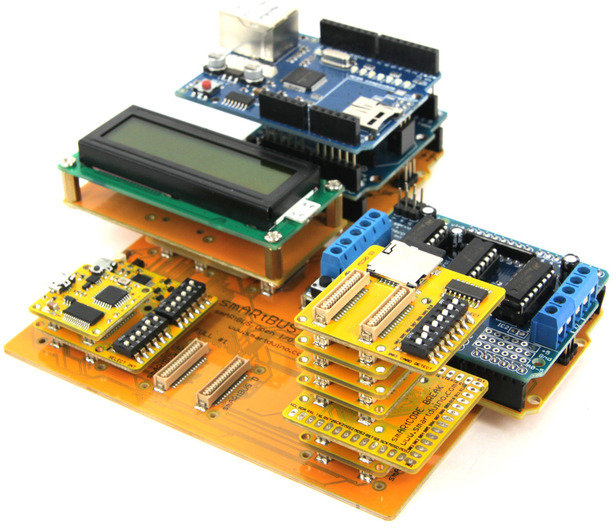There was a big,LITTLE mini-summit during Linaro Connect Europe 2012, where an update was given on current big.LITTLE implementations and the results of measurement of power vs performance. Big.LITTLE Processing Implementations Overview As briefly mentioned in “Versatile Express TC2 (2xA15, 3xA7) Development Board at ARM Techcon 2012“, there are 2 big.LITTLE implementations: In-kernel switcher (IKS) This implementation is already available through Linaro and only required minimal changed to the kernel as it mainly an augmentation to DVFS (Dynamic Voltage and Frequency Scaling) except instead of only adjusting voltage and frequency depending on the load, it will also move the load to different cores. The main drawback is that this implementation only uses half the cores. For example, on a 2x Cortex A15 / 2x Cortex A7 system, it can only use 2 cores at the same time (either A15 or A7 cores), as the load is managed between one type […]
List of Android Benchmarks, Optimizations Results & Benchmarks Analysis
Linaro Connect Europe occurred in Copenhagen on Oct. 29 – Nov. 2 2012 (LCE12) and included 3 mini-summits about Android, big.LITTLE and ARMv8. Linaro has recently posted the presentation slides and I’ll have a look at a few of those slides in details and try to post information that I feel can be interesting. Today. I’ll go over the “Benchmarking and Optimization Opportunities” slides, where we can learn which Android Benchmarks Linaro use, how they’ve decreased benchmark results variance, which parts of the system are actually tested by benchmarks (profiling), and what they plan to do to further optimize Android on ARM. When I do some reviews, I usually simply use Antutu and Quadrant benchmarks to assess the performance of the devices, but Linaro uses many more benchmarks which I’ll list below. I’ll provide 2 links for each benchmark. The first link is to the official website and the other […]
How to Root Kimdecent T21 mini PC and other Nufront NS115 Android Devices
The guys at androidpc.es have acquired a Kimdecent T21 mini PC (aka GV-21) based on the dual core Nufront NS115 processor, and posted instructions to root Kimdecent T21 in Spanish (and now in English) before writing a full review which should be posted next week. Here are the English instructions below: Download Moborobo and install it. Moborobo need to install unsigned drivers. By default, Windows 8 is not too happy with unsigned drivers, and you’ll have to follow these instructions, if you use that OS. Download ROOT-T21 and uncompress it. Make sure USB Debugging is enabled in your mini PC (Settings –> Developer Options) Install Moborobo Daemon from Google Play. Start Moborobo in the PC Execute ROOT_T21_GV-21_V01.bat inside ROOT-21 folder and follow the instructions. Moborobo needs to reconnect with T21 via Wi-Fi when the ROOT programs requires it. Once the procedure is complete, you can download and install SuperSU, as well as the […]
International Black Friday Deals for Development Boards and Chinese Gadgets
Black Friday is the day following Thanks giving in the USA, and is considered the beginning of the Christmas shopping season. Although Black Friday is very much US centric, online shopping may also to access those deals anywhere in the world. 20% discount will be available on ISEE IGEPv2 NO WIFI board, as well as IGEP COMs & EXPANSIONS boards. This is the only development board I’ve found to have a deal for black Friday. Focalprice has a page dedicated to Black Friday with discounts between 11 to 21% for smartphones, tablets, and all sorts of accessories, including the AMPE 10 tablet that will sell for $180.90. There’s also a 6% discount coupon (12TKS6OFF) valid between the 22nd and 25th. Pandawill has sales with up 10% discount between the 22nd and 25th of November. Dealextreme does not have deals, but instead a Black Friday lottery. If you order for over […]
AMLogic Releases U-Boot and Updated Linux Kernel Source Code
AMLogic released kernel 3.0.8 source code for AML8726-MX a few months ago, and yesterday they provided an updated tarballs with the kernel, and for the first time, AFAIK, released the source code for U-Boot. There are 4 new files apparently generated from the (internal) git repository in AMLogic: common-2012-11-20-git-b687495906.tar.gz (108M) – This is the same kernel 3.0.8 release has last time, but with updated code. m1-kernel-android-2012-11-20-git-5d0f6b8e93.tar.gz (103M) – This looks like an older kernel 2.6 for AML8726-M1 only. uboot-master-2012-11-20-git-9b50e9a295.tar.gz (16M) – U-Boot 2010.06 possibly to use with the older 2.6 kernel. Only for M1 & M3 platforms. uboot-next-2012-11-20-git-b0e532795a.tar.gz (40M) – U-Boot 2011.03 for use with M3 and M6 platforms. I’ve already explained how to build the kernel in the previous post, so I’ll focus on U-Boot this time. Ubuntu 12.04 arm-linux-gnueabi- toolchain fails to build U-Boot (uboot-next), so you’ll have to install Sourcery toolchain instead: wget http://openlinux.amlogic.com/download/linux/ARM/gnutools/arm-2010q1-188-arm-none-eabi-i686-pc-linux-gnu.tar.bz2 tar xjvf arm-2010q1-188-arm-none-eabi-i686-pc-linux-gnu.tar.bz2 […]
Olimex to Provide $5 Raspberry Pi GPIO to Breadboard & UEXT Adapter
At $25 and $35 is Raspberry Pi is currently the cheapest board you can buy to develop for ARM Linux, however the expansion boards such as the Gertboard ($60) and the recent PiFace Digital ($32) are not as cheap considering the few components they have on board. This is why Olimex has designed a Raspberry Pi GPIO to breadboard & UEXT adapter (RPI-UEXT) which should be available in 2 weeks for 3.95 Euros (~$5). You then just need to add a breadboard for 2.95 Euros (~$3.8 ), which means for just $9 you can start prototyping easily with the Raspberry Pi. The RPI-UEXT adapter (PCB Layout pictures on the right) also features – as the name implies – a UEXT (Universal EXTension) connector which consists of 10 pins which provide power (+3.3V/GND), and access to asynchronous serial I/O, I2C & SPI signals. This connector allows to connect other UEXT modules […]
Jolla Unveils Sailfish OS based on Meego and Sailfish SDK
Last July, a company called Jolly announced it would design, develop and sell smartphones based on the Meego operating system. This is now closer to reality as a demo has been showcased running on Nokia N950, except the operating system is now called Sailfish OS. Internally, Sailfish OS is built on top of the Mer project and Qt. The UI is built with QML and QtQuick and the standard QtMobility APIs are supported. For software development, you’ll need to use a special version of QtCreator. The development flow looks very similar to what you would do to develop applications for Symbian or Harmattan phones. More precisely, the Sailfish SDK consists of QtCreator, a virtualised Mer Platform SDK and Sailfish components. Code is developed in Qt-Creator on the host device, then the code is passed to the virtualised Mer SDK where it compiles inside the Virtual Machine. If you want to […]
smARtDUINO Open System Provides a Low Cost Modular Arduino Platform
smARtDUINO is a new platform design by the former ARDUINO’s manufacturer (Update: This claim appears to be incorrect and a lie) composed of several compact modules and is a fully funded project on Kickstarter (Less than 3 days remain to become a sponsor). The platform is not based on a single processor, architecture or language but, makes use of an universal platform that can be used to connect components originally developed from different companies, technologies and form factors. For example, it is possible to integrate modules, accessories or shields from Arduino, Netduino, ChipKit and even interact with smartphone using an ADK module, without having to use a breadboard and/or soldering. Interoperability is made possible thanks to what they call “smARtBUS Open I/O“, which is a standard for connectors designed after looking at existing (Arduino) platforms on the market. The company opted for 2 solutions composed of 2 connectors: smARtBUS BASIC […]










